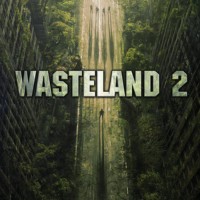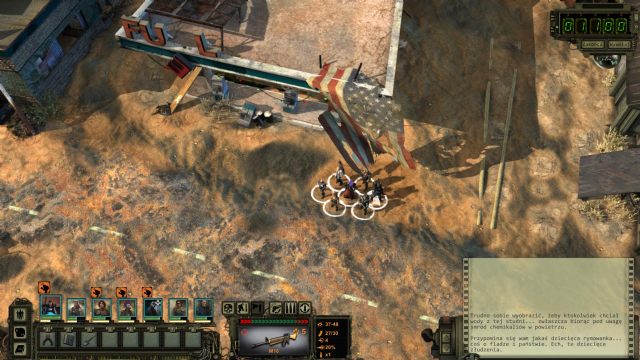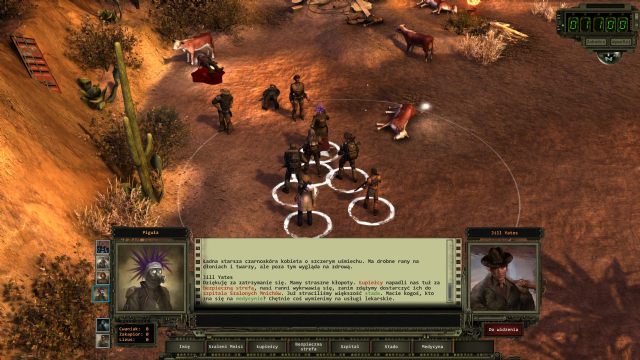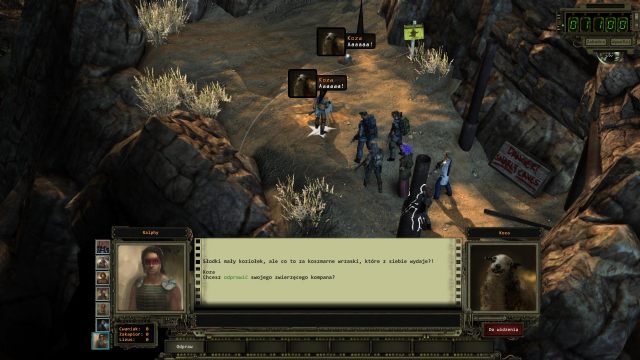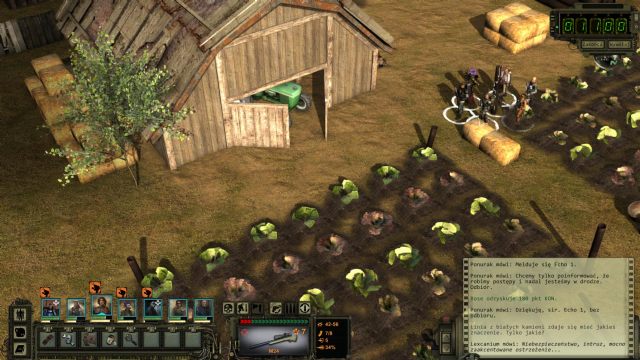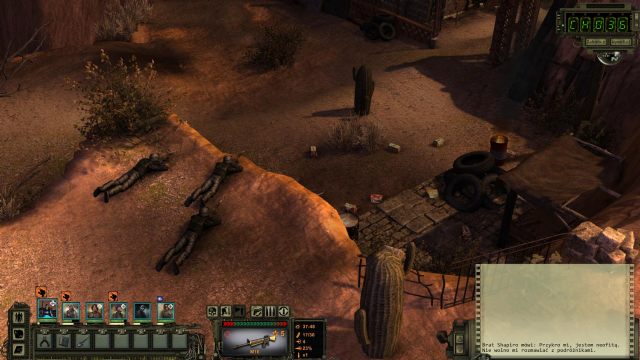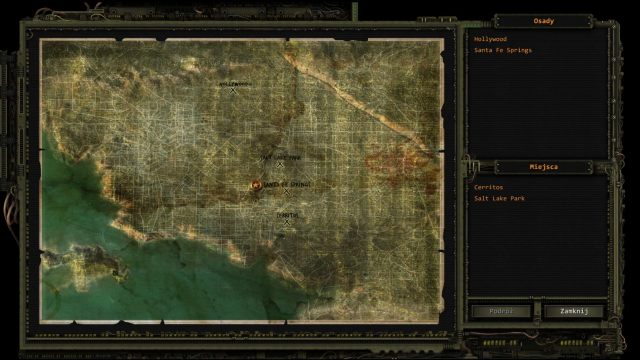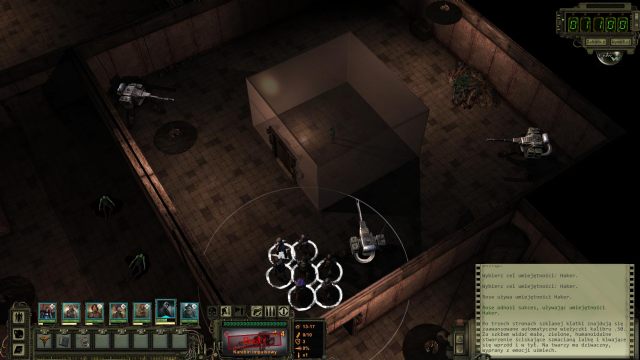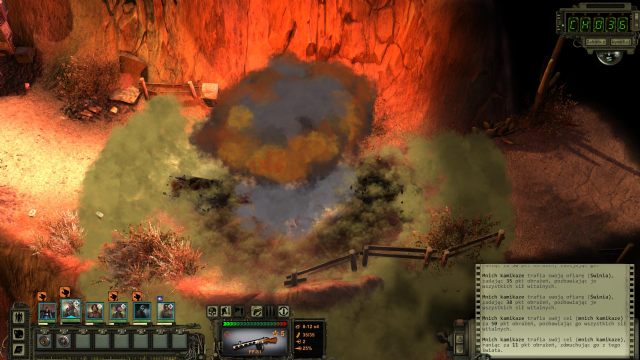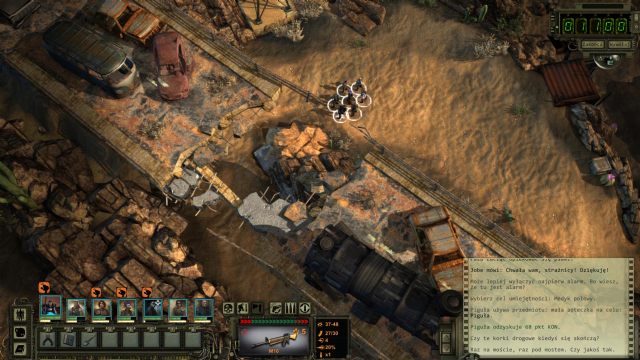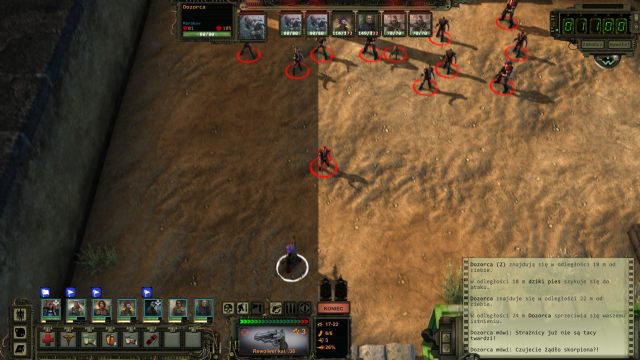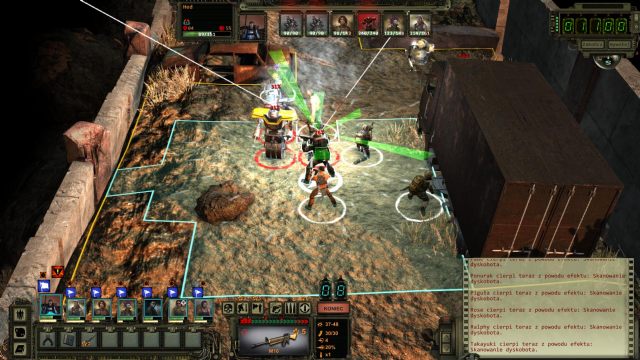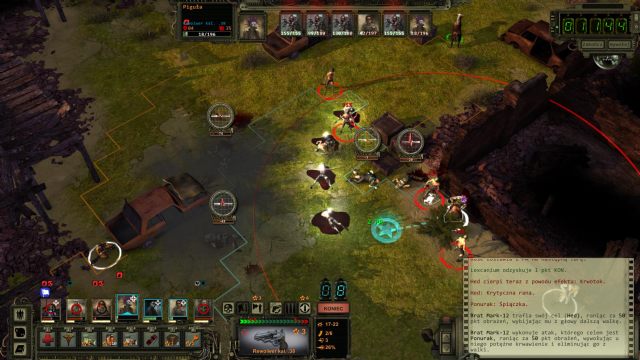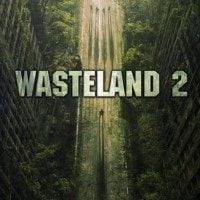Wasteland 2 Review: Best Fallout Kickstarter Can Afford
Brian Fargo and inXile Entertainment challenged publishers, and mostly succeeded by creating a worthy successor to the likes of Fallout and Wasteland.
The review is based on the PC version.
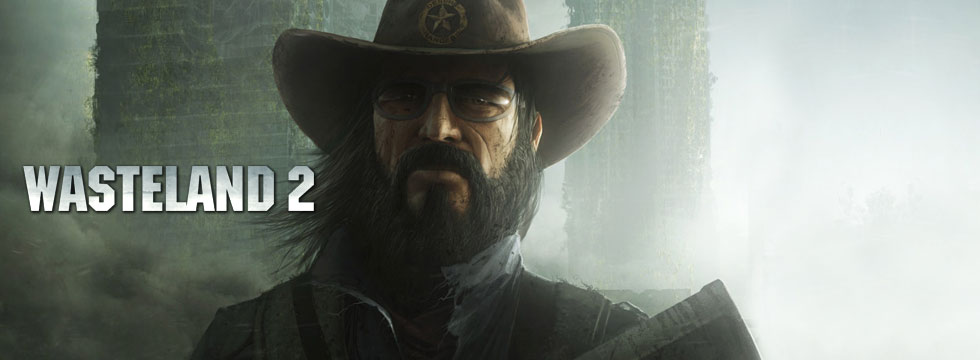
- great atmosphere – a grim outlook on humanity and a great dose of dark humor,
- construction of the game world and quests – quality over quantity,
- a friendly combat system – much more interesting since the beta,
- sensible character development – use of many abilities,
- great scope – an adventure for a few dozen hours.
- hideous graphics and an uncomfortable interface,
- still many technical issues – in quests and the game itself.
I do not remember the first Wasteland game, as it hit store shelves back in 1988, when I was still merely 5 years old. Keeping that in mind, it is quite hard to get pumped up about the extensive post apocalyptic rpg with an exceptionally dark plot and violent themes. I do however remember Fallout debuting a decade later, which was done by the same team. For a teenager back then, it was nothing short of a revelation – getting lost in the wasteland and solving the problems of humans and mutants alike sucked me in for good. And I am not alone in that experience, as for many gamers out there, the first two Fallout games are up until now, what one may call games of a lifetime.
Brian Fargo, one of the creators of both Wasteland and Fallout, decided to remind us of his early works. For me personally, it was something of a promise of returning to the late 90-ies, when almost every rpg game arouse excitement. The task seemed very difficult, despite even the great support of the fans via Kickstarter, were the project received almost 3 million dollars. After a few dozen hours spent in the post apocalyptic Arizona, were Wasteland 2 takes place, I can assure - the fans got what they wished for. The most radioactive game of the year. With all of its qualities and downsides.
A dusty badge and pigeon feces
Wasteland 2 begins in quite a peculiar way – at a grave of one of the Desert Rangers, a member of a faction that decided to maintain order in Arizona. We are talking of course about a state that is still lifting itself up from a nuclear holocaust that took place in the game’s universe in 1998. The so-called Ace, a seasoned ranger, perished under unknown circumstances on a mission of fixing radioactive receivers. Solving the mystery of our comrade and fixing the installation are just a starting point of a much greater intrigue, and at a same time, a plot catalyst full of many various threads. Through its duration we discover the many faces of the post apocalyptic world. Suffice to say, it is rather peculiar, taking into account for example, effective atomic monks. This certain group of fanatics has established a nuclear bomb from a local silos as a deity to which they pray. Their means of peace keeping involves suicide squads armed with nuclear grenades. Following the idea: “let’s live in peace, or detonate everyone”.
The game bursts at the seams with similar motives – mixing a grim outlook on human nature with dark humor and pop culture. One will find here both drama and satire. And even a dozen chances to feel disgust, for example towards the way the local Red Scorpions, who intend to push out the Desert Rangers, enforce their rule. There are also many instances where one can laugh, especially when other games are parodied (there is even a post apocalyptic version of Solid Snake!). I take a quick glance in the backpack of my party and what do I see? The most bizarre combination of items available: a wicker basket, a broken handheld console, bones for a dog, an amigo hat, a human foot, a pin of the Wasteland fan-club and… pigeon feces. The last being, one may say, amusing, as it can easily sold to a willing buyer. A day like any other in the wasteland.
Such humorous nods are numerous, but one can get a feeling that elaborate secrets are much more scarce. I recall that, in Fallout, much more often did I come across certain unique, a lot of times absurd locations, like for example a joint for heroes abandoned by the player. In Wasteland 2 such novelties were more rare, but the case can also be that the game is relatively fresh. It is certain I must have missed something, and I will come back to it in further playthroughs. Even more so, there are many situations I wish I have resolved differently.
From recovering a kitten to saving the world
In tradition of the aforementioned Fallout, we start out getting to know the local societies to, in broader perspective, get to saving the world eventually. Similarly in Wasteland 2 we firstly try to solve the locals’ problems, latter on to learn that the world is in danger of a much greater threat. The creators build up a classic plot scheme, that is intended to involve the player gradually, constantly giving hints, that much more awaits. The realization of this scheme depends on a ability to construct engaging events and creating an interesting primary threat. I must admit that inExile managed that well, and without much risk. The final conflict, despite being predictable, fits in well with the entirety of the game. The witnessed events themselves are mostly interesting and engaging. I have spent a lot of time in the virtual Arizona, and honestly, I never got bored. The story of Wasteland 2 is one of its strong points – despite some weaker moments, it got me hooked on to the very end.
What is the phenomenon behind Wasteland 2 based on? Two things basically. First of all, in comparison to the earlier Fallout games, the creators focused less on urban locations, however still, making sure each one of them is its own microcosm. Prior to reaching almost any location, we must forget what we were accustomed to before – and understand a new power balance. Two rivaling tribes, mad gangs, a religious sect against a well-equipped military unit – practically always there is a certain balance of power or another. Making it harder on our conscience, rarely can we clearly estimate, who is good and who is evil. Even those clearly evil can be reasoned with, what complicates our choices even further. Here lies another spectacular feature – we are given quite different options, and clearly choosing between the light and the dark side of the force is barely existent. Should we give a missile to any of the conflicted groups, or should we disarm it? The answer would seem easy, however seeing the consequences one quickly comes to reevaluate ones pacifism. Many people die in Wasteland 2. Most of them, due to the gamer’s actions.
Focusing on a smaller amount of locations has a side a effect to it – the world game seemed much less lively than the overly mentioned Fallout. The creators try to fill this emptiness in various ways, for example with radio transmissions thanks to which we track other groups of Rangers. After a while I finally understood, why it is so. The world of Wasteland 2 is divided into two seperate maps. I hope I will not be spoiling too much by revealing that the other one is California. A visit to the post apocalyptic Hollywood partially compensates some of the flaws with the construction of the game world. Here, on the get-go we will be introduced to some feuding factions and will receive a greater freedom of action. We also must work on the Rangers’ image from scratch, and so we get involved in numerous smaller tasks. This is without a doubt a highpoint of Wasteland 2, to which one gets after 30-40 hours of gameplay (not to complain – quite satisfactory hours they were). Let’s get one thing straight – less locations does not exactly mean a shorter playthrough. Finishing Wasteland 2 without digging too deep requires at least 50 hours of gameplay.
People with loaded guns and shovels
‘You see, in this world there's two kinds of people, my friend: Those with loaded guns and those who dig. You dig.’ – says Clint Eastwood’s character Blondie in the famous ‘The Good, the Bad and the Ugly’, aiming at his addressee with a revolver. This quote fits perfectly to my play style in Wasteland 2. I have fought a lot and I have also dug a lot – as is a Ranger’s fate. As in a certain post apocalyptic rpg, we roam the wasteland on an overall map. While travelling we must be cautious of our water supply, radiation and bandits. The latter can be outmaneuvered if we have a high rate of the ‘trapper’ skill. I started to appreciate that only after my companion, who specialized in the matter, was taken away and I was forced to fight almost every encountered group. The second Wasteland’s success lies in the fact, that almost every ability is useful. For that reason alone I quickly started to carefully specialize my team, in a way that I would have an expert in every field of expertise. That way, my hands were full and I had an easier access to alternate resolutions. I dug holes, disarmed bombs, opened saves, hacked computers – in this game there is a time and place for everything.
The team consists of four basic characters, which we can create ourselves. The characters are summed up by stats and skills – the first we can upgrade only once per 10 levels, while the second after every combat promotion. The character development system is made even more enjoyable by the fact that it is relatively easy to gain new skills, but it takes time to reach the maximum level of a skill. It is recommended to do so, as it gets gradually harder along the way. Obviously, while traversing the wasteland we come across other companions, which at a time we can have three (others are sent to the Rangers’ main base). Despite the fact that only few have any special plot threads, I came to be very fond of the recruited companions. Our pals comment on the current situation in their specific manner, and, as they are varied, it often ends up atmospheric and funny. One of them for instance, talks like a living dictionary, constantly relying on synonyms. The other, observes the world from a perspective of country bumpkin, who is amazed by anything. Despite being a small addition – it is a very nice touch.
If I had to point out the faults with those aspects of the game, I would mention two things. The enormity of the useful skills can overwhelm at first – we have Perception for detecting mines, Sapper for disarming and so on. An internalization of the characters and simplification of the interface are gravely needed – let a lock be opened by a hero with the highest chance of success. That would greatly limit chores. On the other hand, the construction of characters causes some absurdity. Stats have a fairly small influence over the abilities. In few cases limiting to a highest level, although not in some. That way, a character with great strength is not that much stronger in a fight using, let’s say, a hammer. Common sense dictates that it should. For me such an approach was not an issue, as in broader perspective, did not make me frown. However, for some it may be quite irritating.
Words and gunshots
Such a game is in essence dialogue and combat. The first element was crafted skillfully, but without the splendor characteristic of a high-budget title. A lot of text, not much voice-over – I doubt than anyone interested in Wasteland 2 can have an issue with that, but even still - be warned. During conversations one can ask about uncovered key words, or even right personal propositions. Additionally, we are given oratorial skills called: ‘Hard Ass’, ‘Kick Ass’ and ‘Smart Ass’ – thanks to which we can influence the speaker, or acquire more or less peculiar information. For example, once I managed to learn that a leader of a certain strong group has… hemorrhoids. To influence the dialogue options we gather information from all around, which pays off greatly. We can talk our way through in many situations, which is always entertaining in this type of games. That’s what this is all about – to play people in a poker-like fashion.
When our negotiating skills fail, we must reach for our weapon. I must admit, I was concerned about the combat system at first (as it was boring in the beta). Surprisingly, the designers at inXile pulled it off and turned the combat into something fun. First of all – the sound is good. We all know that a shot must grind a certain way, and hitting something must make a certain squelch, however deranged it may sound. More importantly, now we have more opportunities than ever before to crawl behind cover, use the mode of reaction to enemy movement or any additional equipment such as, for example, a rocket launcher. Naturally, the encounters are numerous, and can tire occasionally – especially when we have a Trapper on the team. However in many of them I enjoyed myself, decimating enemies in various ways. I may add that I was playing on the second of the four difficulty levels and was satisfied as it suited me perfectly – it offered a certain challenge, but was not too demanding. I will leave the remaining levels for additional playthroughs, as after a quick try-out, I came to a realization that they will not be a walk in the park.
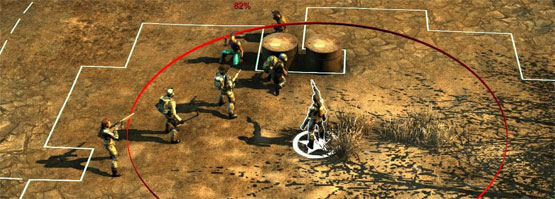
Combat in Wasteland 2 is turn-based. The order of action is determined based on character initiative. Everyone has a certain reserve of action points. In his or her turn a character can relocate, use a skill, use an item or simply attack. The creators took great care of the cover system, or a reaction mode, allowing to take action in an opponent’s turn. Accumulating to that are armor stats, that negate damage – each weapon is circumscribed by the strength of a armor’s breakdown.
However, all of this is not without faults – sadly those have piled up. A game’s drawback is certainly the enemies’ AI. It is not too good, and on the other hand, not that broken. Yet the most irritating is the lack of options of giving even the most simple commands to the escorted characters. On too many occasions, I wanted the third party to survive, but I was not willing to repeat a battle five times hoping that maybe next time they will not be caught in a crossfire. Too bad.
Radioactive side effects
In Wasteland 2 we visit a world in ruins, consisting of thrash of the past. Everyplace is littered with car wrecks, and newer homes are rigidly patched together from the remains of old estates. Unfortunately, that landscape emanates the games horrid technical state which, putting it short, is faulty. Probably no one in inXile Entertainment assumed that they will release a faultless game. Never mind the small bugs, that occur from time to time. The most annoying thing are the breaking quests – which I came by not a few hours into the game. In that case I had to restart the game from the very beginning, or obliterate an entire town (and that is not how a Ranger should do). Later in-game I came across a few plot influencing bugs, which most of the time could have been fixed by loading of the previous save files. Saving often became my habit in Wasteland 2 – I have tenths of save files from various stages, in case something had happened.
The other case being the graphics. Wasteland 2 looks like some sort of a post apocalyptic monster – it is one of the ugliest games I have seen recently. There are pretty locations. Some of the places have even been blessed with atmosphere-enriching elements. Despite this however, some of the textures, character models and the interface are appallingly weak in design. I am not focusing on esthetics, as the rusty art style suits the atmosphere. I am complaining about additional effort, that has to be put in to polish a game. Let’s say that clarity is not the strength here, and the camera work needs a lot of improvement. It is hard to traverse between buildings and search for items without highlighting active objects. It is impossible to judge the battlefield without the help of tips – in some places cover is available, in some not. Besides that, idiosyncratic cases of shooting through walls occur, freezing enemies and so on. Because of all those, on my journey, I was scared of bugs more than anything.
Good job Rangers!
Wasteland 2 is just a step away from being inaccessible and poor, but in all honesty, it does not bother me. As we are accustomed, patches are on the way. Most importantly of all, we received an adventure for which one can ignore all the bugs, horrid graphics and the poor interface. On this quest through the wastelands one meets interesting characters, takes part in memorable events, uncovers dozens of easter eggs and eliminates groups of adversaries in a spectacular fashion.
Brian Fargo and inXile Entertainment challenged publishers, and mostly succeeded by creating a worthy successor to the likes of Fallout and Wasteland. Fans of either one of those titles will be pleased. Too bad the creators did not have a few additional months to think some things over and further polish the game. Then, we would have gotten a real bomb. As of now, it is only a medium-range grenade. I guess this will do for now.
Wasteland 2
Wasteland 2 Review: Best Fallout Kickstarter Can Afford
Brian Fargo and inXile Entertainment challenged publishers, and mostly succeeded by creating a worthy successor to the likes of Fallout and Wasteland.
